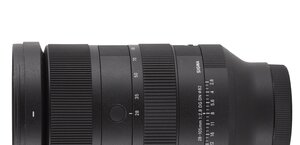Samyang 35 mm f/1.4 AS UMC
8. Vignetting

As you see the vignetting is not bothersome and even on the maximum relative aperture it doesn’t disturb us a lot because it amounts to only 21% (-0.68 EV). The problems disappears completely by f/2.0, where the vignetting is 9% (-0.26 EV).
Please Support UsIf you enjoy our reviews and articles, and you want us to continue our work please, support our website by donating through PayPal. The funds are going to be used for paying our editorial team, renting servers, and equipping our testing studio; only that way we will be able to continue providing you interesting content for free. |
- - - - - - - - - - - - - - - - - - - - - - - - - - - - - - - - - - - - - - - - - - - - - - - -
The chart below shows how the Samyang compares with its competitors.
| |
Nikkor 1.4/35G |
Canon 1.4/35L |
Sony 1.4/35G |
Samyang 1.4/35 |
| f/1.4 |
32% |
32% |
24% |
21% |
| f/2.0 |
14% |
16% |
11% |
9% |
| f/2.8 |
5% |
8% |
4% |
4% |
As we wrote earlier, taking into account significant physical dimensions of the lens we expected a good result but perhaps not as good as this one. The Samyang wins hands down against much more expensive rivals.
Let’s check the situation on full frame.

At the maximum relative aperture the vignetting cannot be omitted because it reaches 48% (-1.90 EV) there. It is also felt by f/2.0, where it is 34% (-1.20 EV). By f/2.8 and f/4.0 the problem becomes insignificant because the values we see there are 19% and 12% respectively. How does the Samyang compare with its competitors? The chart below allows us to asses its performance.
| |
Nikkor 1.4/35G |
Canon 1.4/35L |
Sony 1.4/35G |
Samyang 1.4/35 |
| f/1.4 |
60% |
70% |
59% |
48% |
| f/2.0 |
44% |
50% |
43% |
34% |
| f/2.8 |
25% |
35% |
23% |
19% |
| f/4.0 |
15% |
27% |
15% |
12% |
Once again the cheapest Samyang is better than its expensive rivals, winning hands down. Its advantage is especially visible when you compare it to the Canon L series lens which, in the vignetting category, performs really badly.
 |






